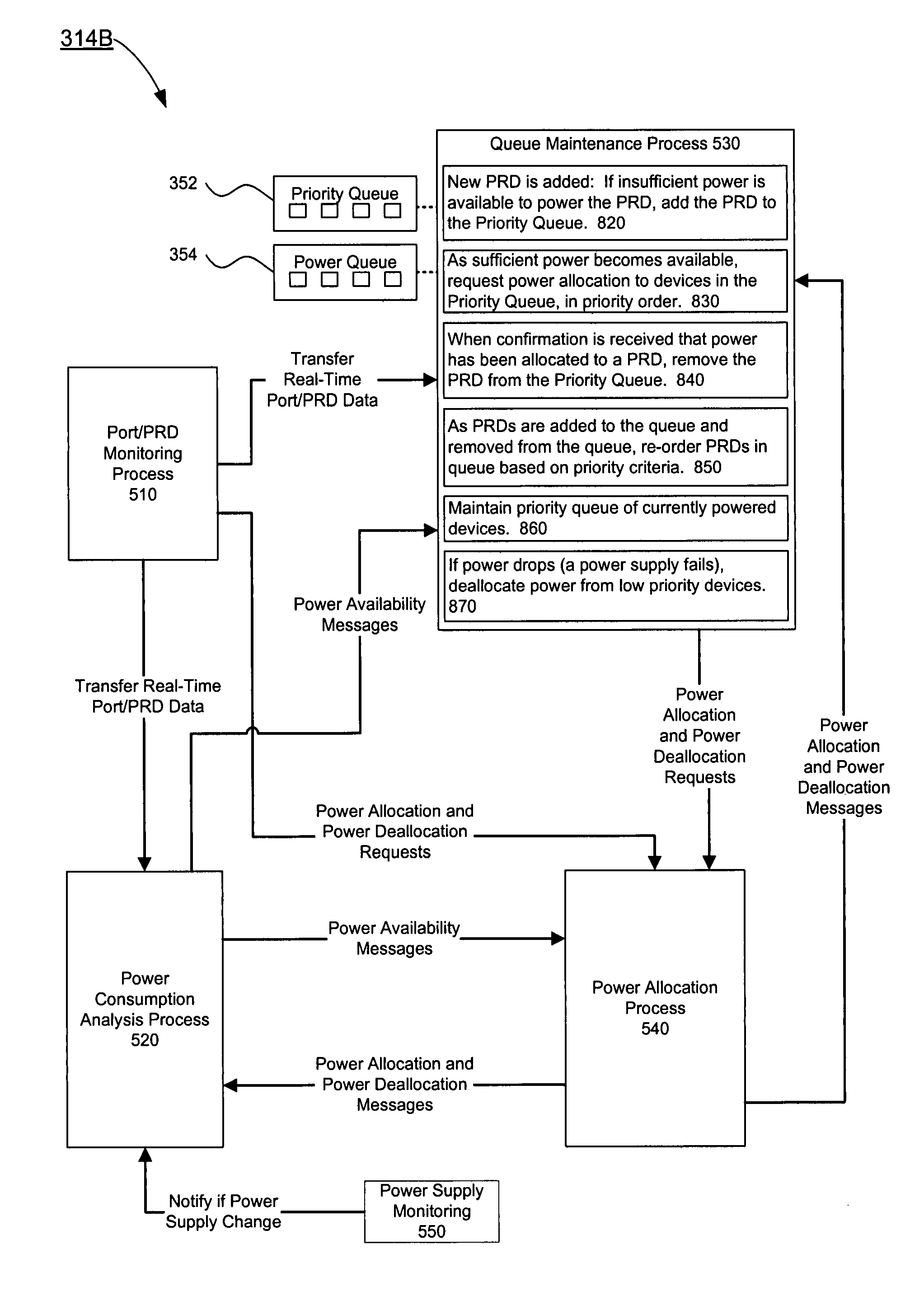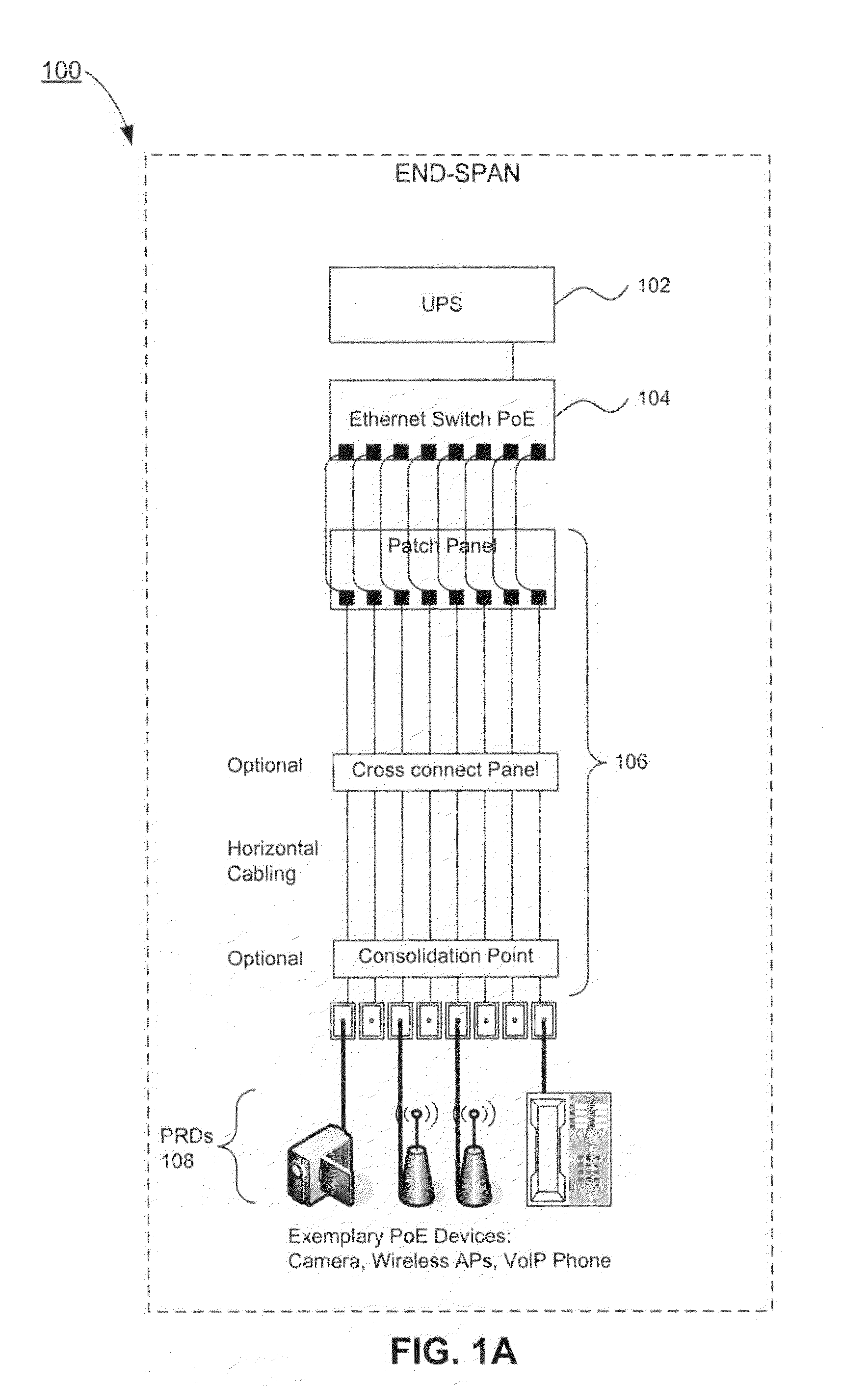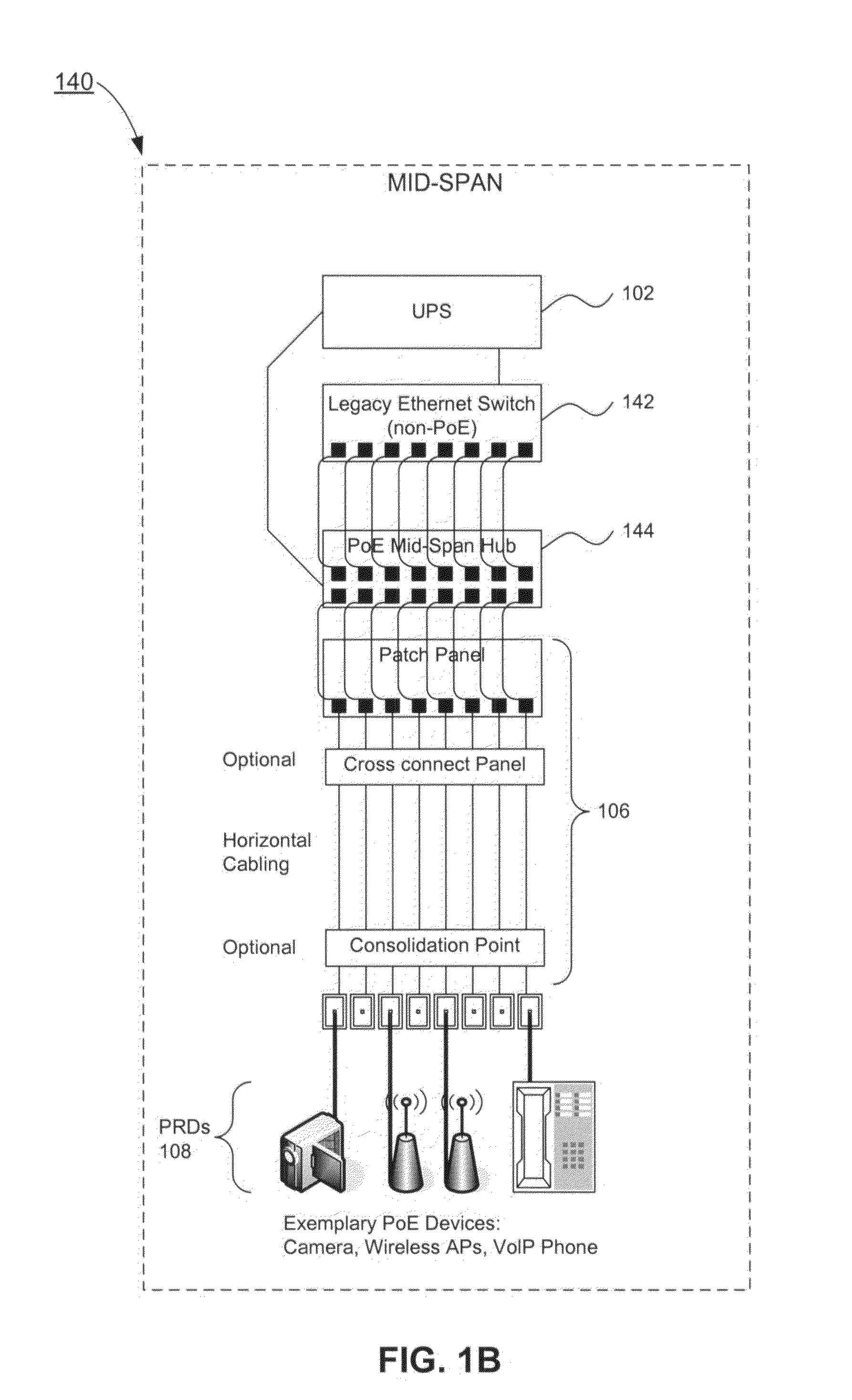Power management of PoE devices based on powered queue and unpowered queue of time order connection priority while maintaining reserve power
a technology of power management and poe devices, applied in the direction of instruments, data switching details, liquid/fluent solid measurement, etc., can solve the problems of increasing the physical bulk of cabling, requiring more space, and long-standing disadvantages of this approach, so as to maximize the power allocated to each individual network device, minimize the total number of network devices, and maximize the effect of available power
- Summary
- Abstract
- Description
- Claims
- Application Information
AI Technical Summary
Benefits of technology
Problems solved by technology
Method used
Image
Examples
Embodiment Construction
I. Introduction
[0038]The present invention is directed to a system and method for dynamic power management and allocation in a communications system or communications network. In an exemplary embodiment, power is provided from power source equipment (PSE) to one or more power requiring devices (PRDs) via a means of power conveyance, such as network cabling. In one embodiment of the present invention, the PSE is contained in the same hardware unit or device which also serves as the data communications equipment (DCE), that is, the hardware unit or device which transmits data to and / or accepts data from the PRDs. Further, data sent back and forth via the means of power conveyance may include, in addition to any network communications proper, data which is related to power management of the PRD or PRDS.
[0039]It should be understood that this communications system configuration is exemplary only, and other communications system or network configurations are possible and are consistent w...
PUM
 Login to View More
Login to View More Abstract
Description
Claims
Application Information
 Login to View More
Login to View More - R&D
- Intellectual Property
- Life Sciences
- Materials
- Tech Scout
- Unparalleled Data Quality
- Higher Quality Content
- 60% Fewer Hallucinations
Browse by: Latest US Patents, China's latest patents, Technical Efficacy Thesaurus, Application Domain, Technology Topic, Popular Technical Reports.
© 2025 PatSnap. All rights reserved.Legal|Privacy policy|Modern Slavery Act Transparency Statement|Sitemap|About US| Contact US: help@patsnap.com



